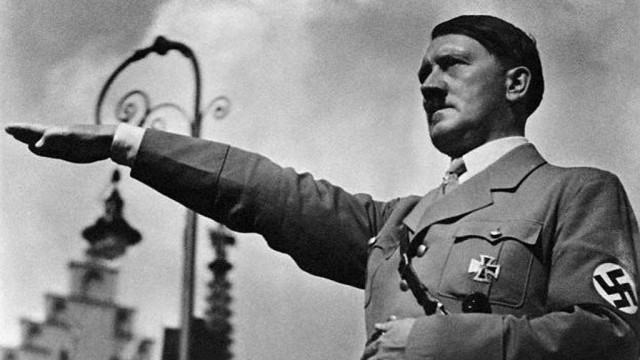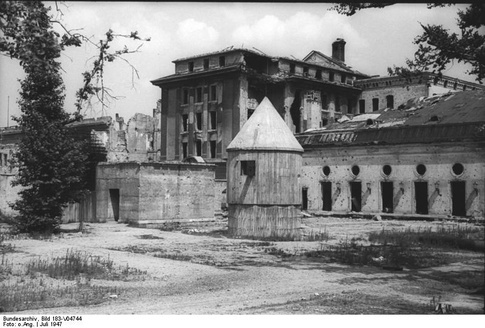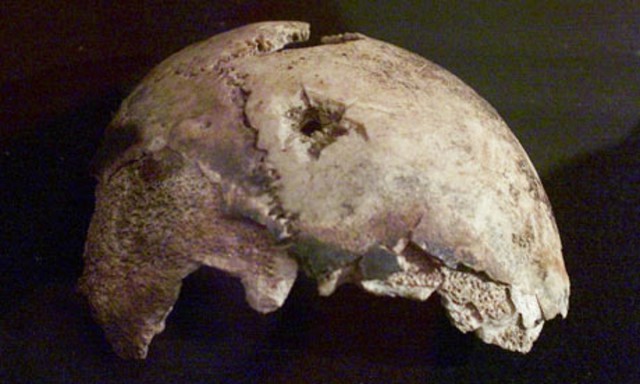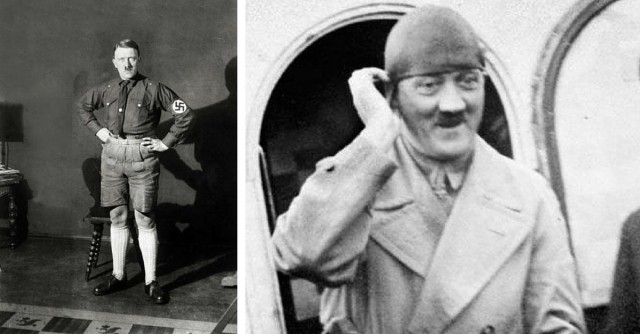Α) Whatever Happened to Hitler’s Body?

April 30, 1945 – the Soviet Army moves quickly through the city of Berlin, the capital of Germany and the home base of the Third Reich. Beyond the city’s limits are the Allied forces, sweeping through the rest of the country, waging and winning battles as the Nazi army is brought to its knees.
Adolf Hitler still rules Germany, still holds the title of Fuhrer over the Third Reich, but this day will be his last. By this date, the Nazi regime was collapsing, and its leader would not see the month of May – or the end of World War II.
On April 30, 1945, Adolf Hitler died by his own hand. As his armies attempted to stave off a two-sided attack from the Allied and Soviet forces, Hitler hid inside a secret, fortified bunker in Berlin. He knew that he could not win the war; that his power and reign were rapidly coming to an end.
So, Hitler devised a plan that he hoped would provide an escape from humiliation at the hands of his enemies: he would end his life, and make his corpse disappear. As the Soviets stormed Berlin on April 30, Hitler gathered his closest allies and friends inside his bunker. He married his longtime girlfriend, Eva Braun, in a brief and simple civil ceremony, then spoke with his secretary to finalize his will.
At approximately 2:30 p.m. Hitler and Braun entered their private chambers within the bunker; about an hour later, at 3:30 p.m., the sound of a gunshot echoed through the bunker. Adolf Hitler and Eva Braun were dead – Braun due to a self-ingested cyanide pill, Hitler via a cyanide pill and self-inflicted gunshot to the head.

With no marked grave, no specific site of burial, the location of Hitler’s body has confused and confounded many in the decades since his demise. Countless conspiracy theories have popped up in countries around the world since 1945, and the recent advent of forensic technology in the years since Hitler’s death have all complicated this incredible mystery.
What happened in the hours, days, and even years after Hitler committed suicide may not be as much of a mystery anymore, though, thanks to information revealed by former members of the Soviet Army.
According to members of the Nazi Party who were inside Hitler’s bunker when he died, who revealed their information during post-World War II trials, Martin Bormann and another aide were given instructions by their Fuhrer before his death. Once certain Hitler and Braun were dead, Bormann and the aide wrapped the bodies in blankets, carried them outside of the bunker, and laid them down about six feet from its entrance.
The duo then poured 200 liters of benzine, over both corpses and lit them on fire. This was done in an effort to throw the Soviets off track, to prevent them from discovering Hitler’s body and defiling it. The plan worked – when the Soviet army arrived at the Fuhrerbunker on May 4, 1945, they noticed the burned bodies. They did not, however, consider that one of them might be Hitler’s body, and they casually buried the remains in a bomb crater on the bunker property. The Soviets conducted a search of the bunker but found no traces of Hitler.

On May 11, a dentist confirmed that the bodies were, in fact, those of Adolf Hitler and Eva Braun. The Soviets kept their information secret from the Allied forces and nations for some time; Germany did not even declare Hitler dead until over a decade later, in 1956.
Once the Soviets were confident that they held Hitler’s remains, they went to great and secretive lengths to ensure it never fell into the hands of another army, nation, or people. As a result, Hitler’s body did not stay in a single resting place for long – over the course of the following years, his remains changed locations three times.
In 1970, the Kremlin ordered the Soviet outpost at Magdeburg closed and the land returned to the East German government. However, the Soviets didn’t want to turn over the land with Hitler still buried within it; they worried that, if discovered, neo-Nazis and others might turn the site into a shrine. It was time for the Soviets to make Hitler’s body disappear once more – this time, it would be for good.
Yuri Andropov, head of the KGB, ordered agents to get rid of Hitler’s remains and ensure they would never be found. Under Andropov’s orders, KGB officer Vladimir Gumenyuk chose a secret spot in which to place Hitler’s body for eternity.
Gumenyuk and three other KGB men pitched a tent over the burial site, disinterred Hitler’s remains, and carried them into the nearby mountains while disguised as fishermen. Upon arriving at a stream, the men lit a fire, tossed Hitler’s already burned remains upon it and burned all that was left once more.
Now, all that was left of the once ominous and powerful dictator was a pile of sooty ashes. Gumenyuk and his team scooped the ashes into a bag, walked to the edge of a cliff overlooking the stream, and let great gusts of wind carry Hitler’s remains away to places unknown.

Though Russian officials still claim to this day that the skull fragments are all that remains of Hitler’s body, many countries disagree – both French and United States forensic experts tested these remnants and argued that they belong to a young woman.
The grave in which Adolf Hitler’s body was placed has long been sought after by historians, by scientists, and by conspiracy theorists. Yet the man who truly knows what happened is Gumenyuk, the only surviving member of that Soviet KGB team who carried the horrific Hitler’s remains to their final resting place: scattered throughout a forest, placed by the wind alone.
There is no way to know exactly where Hitler’s ashes lay today, or if they even exist at all after the many decades that have passed.
======================================
B)Medical records prove Hitler did only have one ball

During World War Two, Allied troops made up a song about Hitler only having one ball, and it remains a well-known tune to this day in the UK. However, now previously lost medical documents show that the song may have been true.
Adolf Hitler underwent a medical examination when he was arrested in 1923 after his failed revolt in a Munich beer hall. The medical records were long since lost, but have now been recovered and show that Hitler did, in fact, have one testicle that was undescended.
At the time that the song was sung by Allied troops to the melody of the song Colonel Bogey, there was also much discussion about whether it was true or not.
Professor Peter Fleischmann of Erlangen-Nuremberg University in Germany now has the medical records and confirmed that the examination Hitler had in 1923 showed he had an undescended testicle on his right side.
The records surfaced when they were put up for sale at an auction five years ago. They were seized by the local Bavarian government and were shared with the University for analysis.
The medical examination was undertaken by Dr Josef Steiner Brin and state that Adolf Hitler is healthy, but suffers from right-side cryptorchidism – this is a medical condition that describes an undescended testicle.
Previously claims had been made that Hitler had lost one of his testicles due to a shrapnel wound in World War One. While Hitler’s childhood doctor had previously claimed that Hitler’s testicles were completely normal, but in some cases, cryptorchidism can develop later in life. Dr Bloch was a Jew but had stayed in Austria in the early days of the war under Hitler’s personal protection until he immigrated to America in 1940.
When the Soviet Red Army discovered the charred remains of Hitler’s body, they conducted an autopsy, and the report stated that one testicle was missing, but that it was missing on his left side.
If it is true, it may explain why Hitler didn’t have any children since it is often considered to reduce fertility.
www.warhistory.com

Δεν υπάρχουν σχόλια:
Δημοσίευση σχολίου